
How to Make St Brigid’s Cross
Just as the shamrock is associated with St Patrick, a cross made from rushes is the symbol of St Brigid. This is one of the most widespread Irish customs associated with her.
Legend tells how she picked up rushes from the floor and began to weave them into a cross while she sat at the deathbed of a pagan chieftain. When he asked what she was doing, she told him about Jesus
and his death on the cross. Before he died, the chieftain asked to
be baptised.
Crosses are traditionally made from rushes, but they can also be made from wheat stalks, grasses, or reeds. If the reeds or rushes are dry and brittle, soak them to soften them. The crosses are typically made on the eve of St Brigid’s Day and placed above the door of the house for blessing and protection.
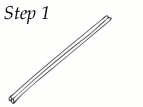
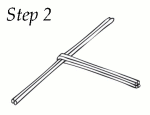
Directions:
1. Hold one reed vertically, and fold another in half around the mid-point of the first.
2. Take a third reed and fold it around the second one, parallel to the first. You should now have a T-shaped piece, with one arm having one strand, another having two and the third having three.
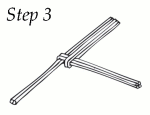 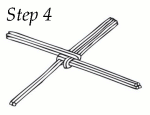
3. Fold a fourth reed around the third one to form a cross.
4. Fold a fifth one around the fourth, parallel to the single strand. As you work, snug the reeds against the centre and hold it tight.
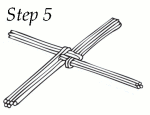
5. Continue folding reeds around the previous one (and the ones beside it) working in a circular fashion until you have created enough of a woven centre.
6. When the centre is as big as you like, hold the reeds together carefully and tie the ends of each arm tightly with reeds, string or some type of natural fibre. Trim the ends with scissors.
A traditional blessing said in some parts of Ireland for the hanging of St Brigid’s cross:
“May the blessing of God and the Trinity be on this cross,
and on the home where it hangs and on everyone who looks at it.”
Material taken from The Life of Saint Brigid by Anna Egan Smucker, published by Appletree Press.
|
|








